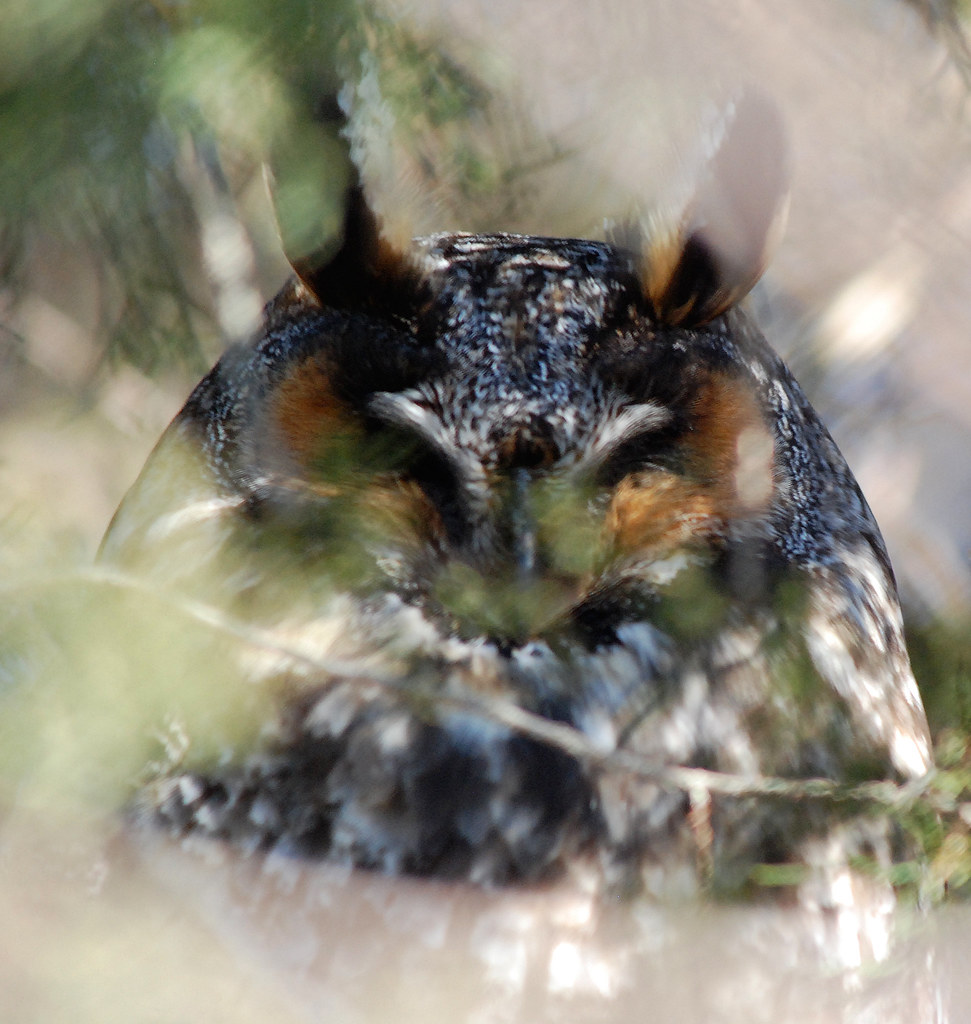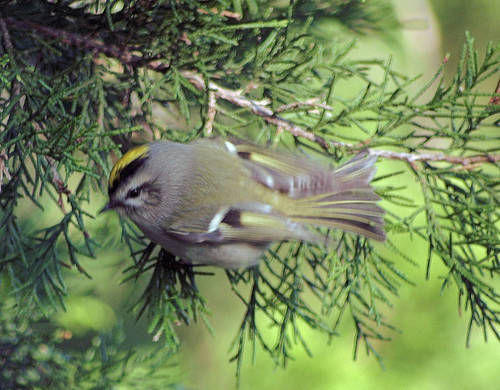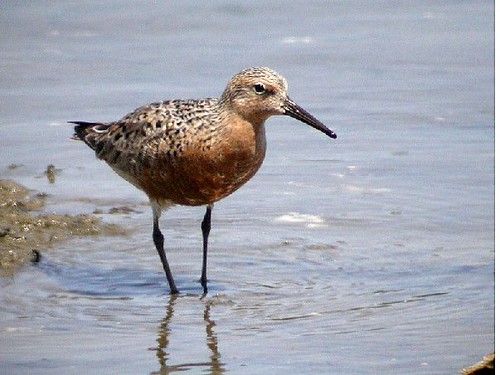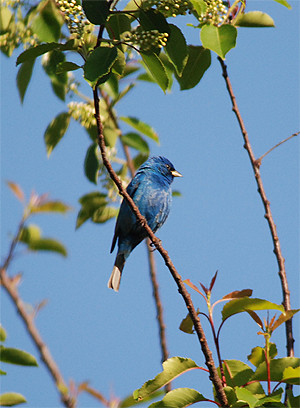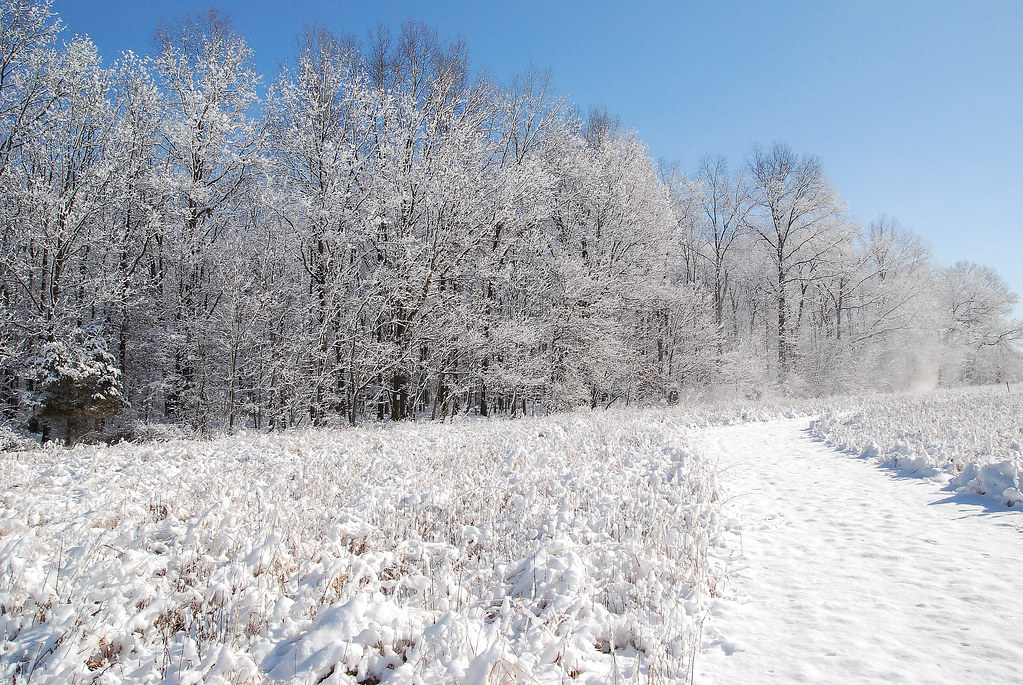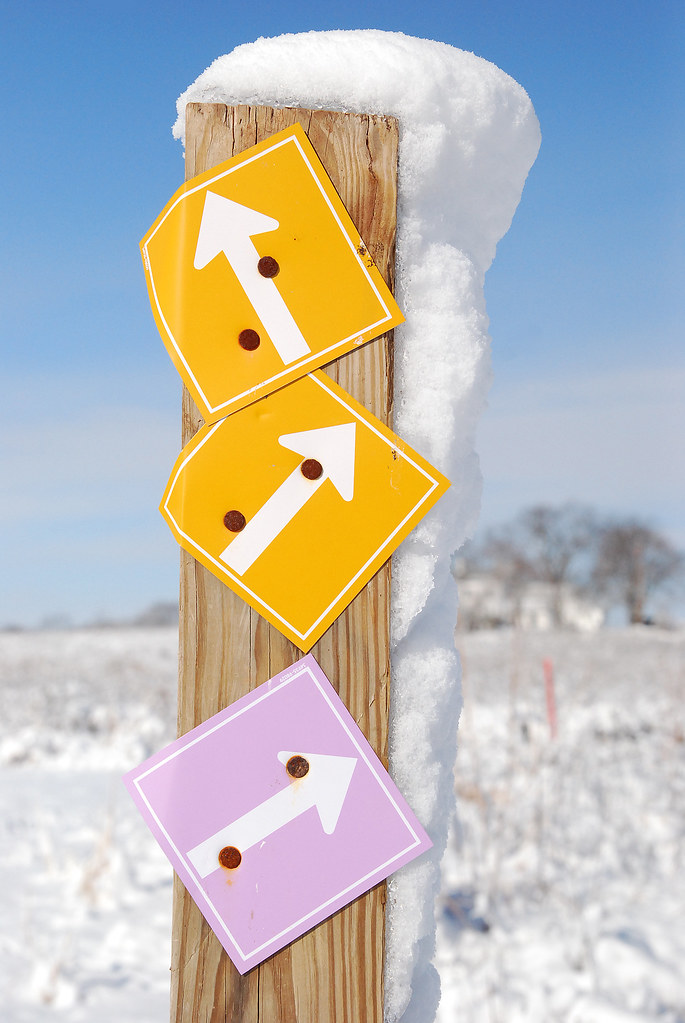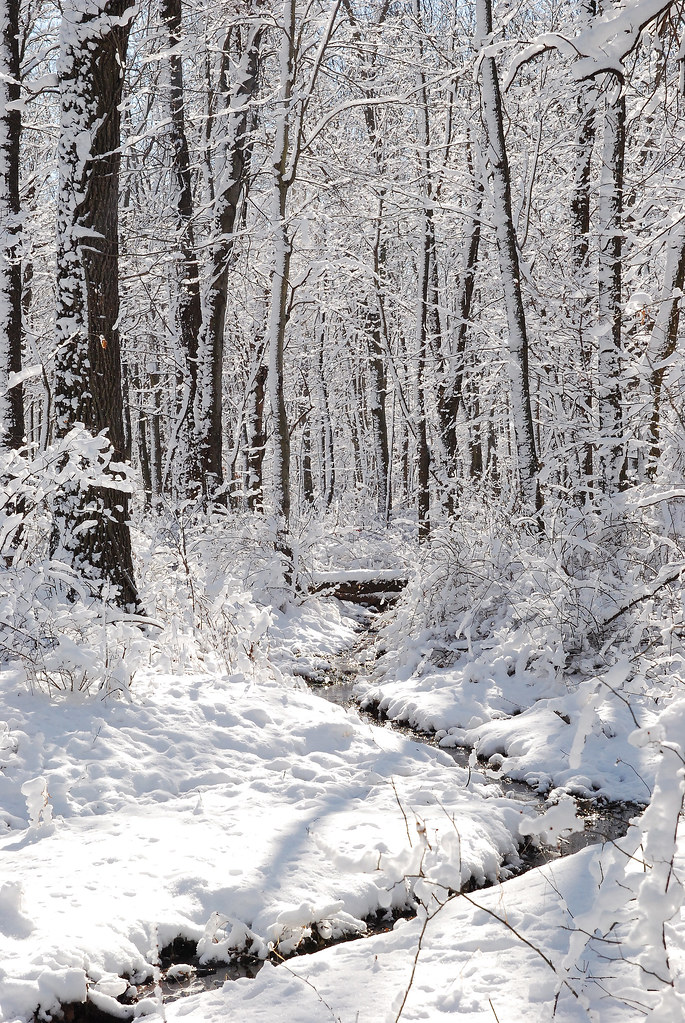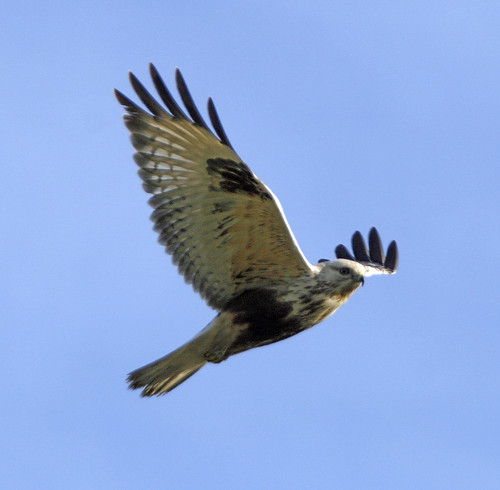Three of my fellow graduate students and I decided to do some winter birding yesterday. It was unmistakably winter, with wind chills in the single digits at times. We started the day meeting at Round Valley Reservoir to look for the Eared Grebe, which we found quickly with the help of some other birders. A flock of White-Winged Crossbills flew overhead, and we were informed that we had just missed some Common Redpolls. After scanning the scores of gulls and finding an Iceland Gull mixed in with the Herring and Ring-Billed Gulls, we decided to head out and return later when the sun wasn't in such an inconvenient spot (it should have known we were trying to bird-watch!).
Richline Road was our next stop, to search for Crossbills and Redpolls. Unfortunately neither were seen, but some other birds started to become active, including a Brown Creeper and a Hairy Woodpecker.
Moving on to the town of Alpha, we stopped at Oberly Road when we spotted a flock of Horned Larks. Stepping out onto the road, we got a real treat when more and more Larks flew right over us, a few landing within mere feet.
Photograph by Eric Bégin (c) 2008
Off in the distance we spotted a flock of geese. As they drew nearer, we identified them as Snow Geese, and behind the first wave was another...and another...and another. Between 2,000 and 3,000 birds flew over our hands and began to land in one of the fields. It was a spectacular sight to behold (click on image for full-size version).
Photograph by Bill Lynch (c) 2009
After watching the Snow Goose flock settle in and spotting an immature Bald Eagle off in the distance, we started seeing Rough-Legged Hawks. Both color morphs, including some incredible views of both immature and adult light-morph birds. Each of them slowly moved toward us and hovered about 100 feet over our heads. Certainly one of the highlights of the day.
Photograph by Rick Leche (c) 2007
After a satisfying meal we moved on to Califon to try and find the Barnacle Goose, but had no luck in town or at Spruce Run Reservoir. So we headed back to Round Valley and hiked around the reservoir. In addition to the Eared Grebe from earlier on, we spotted Horned Grebe and a beautiful Red-Necked Grebe sitting only 50 feet off shore. Common Loon, Pine Siskin, Bufflehead, and a single White-Winged Crossbill kept us busy as we hiked back to the boat launch. Not realizing the park closed at 4pm and not at sunset, we had to hike from the far gate 2 miles back to the car. An amusing end to our day, if not a little inconvenient.
There certainly are some exciting winter birds here right now, and it's worth braving the cold to see thousands of Snow Geese, crystal clear views of Rough-Legged Hawks, and much more. So bundle up, throw those binoculars around your neck, and get out there!
I think this photograph more accurately represents just how many geese were hanging out in Alpha (click image for full-size version):

Photograph by Bill Lynch (c) 2009
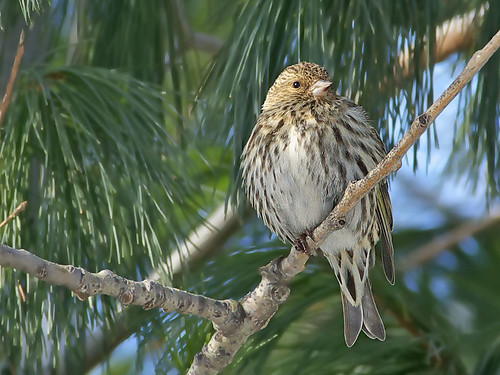 Photograph by David Joly (c) 2009
Photograph by David Joly (c) 2009




